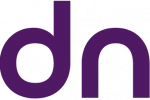ROI — Return on Investment — is the cornerstone of any effective digital marketing strategy. Yet many marketing agencies and even some paid traffic agencies fall into the trap of chasing superficial success metrics while ignoring what really matters: results that grow the business.
This article uncovers common mistakes agencies make when it comes to ROI, and more importantly, how to fix them. Whether you’re an agency, a client, or someone working on website creation, this is your roadmap to performance that actually pays off.
Mistake #1: Confusing Vanity Metrics with ROI
It’s easy to get caught up in numbers that look impressive:
Followers
Likes
Clicks
Impressions
But if those metrics don’t lead to real actions — like leads, purchases, or bookings — they don’t matter.
✅ Fix:
Tie every campaign to business outcomes. Replace “How many views did we get?” with “How many leads did this generate?” or “What was the cost per acquisition?”
Mistake #2: Not Aligning Strategy with Business Goals
Too often, agencies execute trendy tactics without deeply understanding the client’s actual goals — such as growing sales, entering new markets, or shortening the sales cycle.
✅ Fix:
Start every engagement by identifying the client’s primary business goals and use ROI-based KPIs to measure success. This ensures the strategy is focused and relevant from day one.
Mistake #3: Ignoring the Full Sales Funnel
Many agencies focus too heavily on top-of-funnel metrics — reach, clicks, engagement — and neglect the mid and bottom of the funnel, where conversions happen.
✅ Fix:
Adopt a full-funnel approach that includes:
Awareness (ads, social media)
Consideration (landing pages, lead nurturing)
Conversion (offers, retargeting, checkout optimization)
Only by monitoring all funnel stages can you calculate true ROI.
Mistake #4: Poor Website Optimization
Even the best marketing campaign will underperform if it’s driving traffic to a weak website. Slow load times, confusing layouts, and weak calls to action all destroy ROI.
✅ Fix:
Include website creation and conversion rate optimization (CRO) in your marketing strategy. Make sure landing pages:
Load in under 3 seconds
Are mobile-optimized
Have clear, persuasive CTAs
Offer trust signals (testimonials, security badges)
This is where collaboration between marketing and web development teams becomes crucial.
Mistake #5: Failing to Attribute Results Properly
Without the right tracking setup, it’s impossible to know where leads or sales are coming from. Many agencies report on results, but can’t tie them back to specific tactics.
✅ Fix:
Implement full conversion tracking using tools like:
Google Analytics 4
UTM parameters
CRM integrations (HubSpot, Salesforce)
Google Tag Manager
Paid traffic agencies should provide clear attribution reports showing how each campaign contributes to ROI.
Mistake #6: Not Educating Clients on ROI
Agencies sometimes assume that clients understand metrics and ROI — or worse, they intentionally avoid transparency. This leads to misunderstandings, dissatisfaction, and short-term contracts.
✅ Fix:
Take time to educate clients:
Share clear, ROI-focused reports
Explain how data connects to revenue
Set realistic expectations for timelines and results
Clients who understand the value of ROI are more likely to stick around long-term.
The Role of Website Creation in ROI
Your website is the center of your digital ecosystem. Whether traffic is coming from social ads, SEO, or email — it all lands there. ROI-focused website creation includes:
Built-in analytics
SEO best practices
Lead generation tools
Conversion-focused design
Agencies that ignore this step risk undercutting their own campaigns.
Conclusion: Agencies Must Rethink ROI from the Ground Up
ROI isn’t just a number at the end of a report — it’s a mindset. Marketing agencies and paid traffic agencies that prioritize long-term value over short-term wins are the ones that survive, grow, and earn client trust.
By focusing on business outcomes, optimizing every touchpoint (including website creation), and building transparent, data-driven relationships, agencies can turn ROI into a competitive advantage — not just a KPI.

